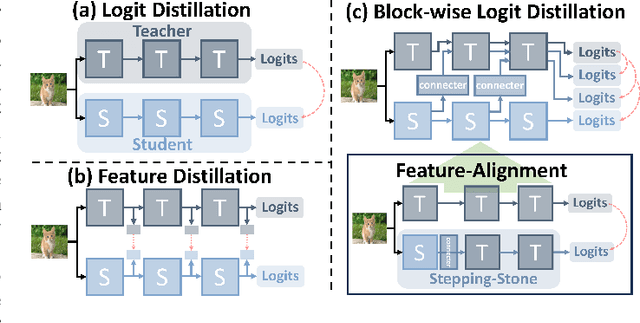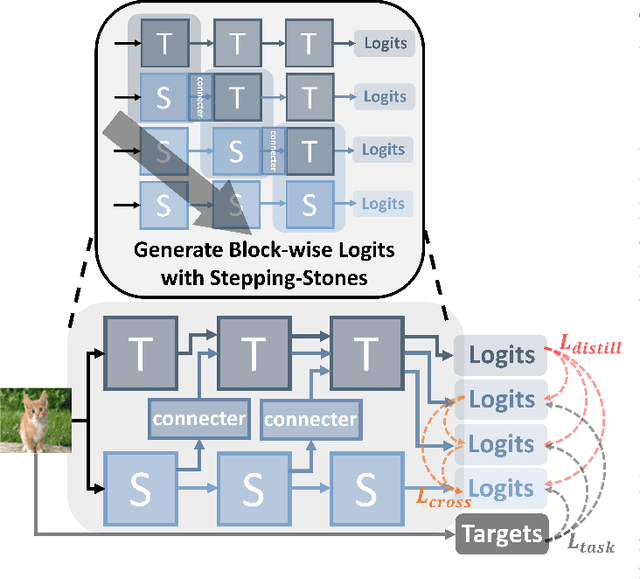Zuozhu Liu
MT-RewardTree: A Comprehensive Framework for Advancing LLM-Based Machine Translation via Reward Modeling
Mar 15, 2025Abstract:Process reward models (PRMs) have shown success in complex reasoning tasks for large language models (LLMs). However, their application to machine translation (MT) remains underexplored due to the lack of systematic methodologies and evaluation benchmarks. To address this gap, we introduce \textbf{MT-RewardTree}, a comprehensive framework for constructing, evaluating, and deploying process reward models in MT. Unlike traditional vanilla preference pair construction, we propose a novel method for automatically generating token-level preference pairs using approximate Monte Carlo Tree Search (MCTS), which mitigates the prohibitive cost of human annotation for fine-grained steps. Then, we establish the first MT-specific reward model benchmark and provide a systematic comparison of different reward modeling architectures, revealing that token-level supervision effectively captures fine-grained preferences. Experimental results demonstrate that our MT-PRM-Qwen-2.5-3B achieves state-of-the-art performance in both token-level and sequence-level evaluation given the same input prefix. Furthermore, we showcase practical applications where PRMs enable test-time alignment for LLMs without additional alignment training and significantly improve performance in hypothesis ensembling. Our work provides valuable insights into the role of reward models in MT research. Our code and data are released in \href{https://sabijun.github.io/MT_RewardTreePage/}{https://sabijun.github.io/MT\_RewardTreePage}.
ReCamMaster: Camera-Controlled Generative Rendering from A Single Video
Mar 14, 2025Abstract:Camera control has been actively studied in text or image conditioned video generation tasks. However, altering camera trajectories of a given video remains under-explored, despite its importance in the field of video creation. It is non-trivial due to the extra constraints of maintaining multiple-frame appearance and dynamic synchronization. To address this, we present ReCamMaster, a camera-controlled generative video re-rendering framework that reproduces the dynamic scene of an input video at novel camera trajectories. The core innovation lies in harnessing the generative capabilities of pre-trained text-to-video models through a simple yet powerful video conditioning mechanism -- its capability often overlooked in current research. To overcome the scarcity of qualified training data, we construct a comprehensive multi-camera synchronized video dataset using Unreal Engine 5, which is carefully curated to follow real-world filming characteristics, covering diverse scenes and camera movements. It helps the model generalize to in-the-wild videos. Lastly, we further improve the robustness to diverse inputs through a meticulously designed training strategy. Extensive experiments tell that our method substantially outperforms existing state-of-the-art approaches and strong baselines. Our method also finds promising applications in video stabilization, super-resolution, and outpainting. Project page: https://jianhongbai.github.io/ReCamMaster/
DiffPO: Diffusion-styled Preference Optimization for Efficient Inference-Time Alignment of Large Language Models
Mar 06, 2025Abstract:Inference-time alignment provides an efficient alternative for aligning LLMs with humans. However, these approaches still face challenges, such as limited scalability due to policy-specific value functions and latency during the inference phase. In this paper, we propose a novel approach, Diffusion-styled Preference Optimization (\model), which provides an efficient and policy-agnostic solution for aligning LLMs with humans. By directly performing alignment at sentence level, \model~avoids the time latency associated with token-level generation. Designed as a plug-and-play module, \model~can be seamlessly integrated with various base models to enhance their alignment. Extensive experiments on AlpacaEval 2, MT-bench, and HH-RLHF demonstrate that \model~achieves superior alignment performance across various settings, achieving a favorable trade-off between alignment quality and inference-time latency. Furthermore, \model~demonstrates model-agnostic scalability, significantly improving the performance of large models such as Llama-3-70B.
Fair-MoE: Fairness-Oriented Mixture of Experts in Vision-Language Models
Feb 10, 2025Abstract:Fairness is a fundamental principle in medical ethics. Vision Language Models (VLMs) have shown significant potential in the medical field due to their ability to leverage both visual and linguistic contexts, reducing the need for large datasets and enabling the performance of complex tasks. However, the exploration of fairness within VLM applications remains limited. Applying VLMs without a comprehensive analysis of fairness could lead to concerns about equal treatment opportunities and diminish public trust in medical deep learning models. To build trust in medical VLMs, we propose Fair-MoE, a model specifically designed to ensure both fairness and effectiveness. Fair-MoE comprises two key components: \textit{the Fairness-Oriented Mixture of Experts (FO-MoE)} and \textit{the Fairness-Oriented Loss (FOL)}. FO-MoE is designed to leverage the expertise of various specialists to filter out biased patch embeddings and use an ensemble approach to extract more equitable information relevant to specific tasks. FOL is a novel fairness-oriented loss function that not only minimizes the distances between different attributes but also optimizes the differences in the dispersion of various attributes' distributions. Extended experiments demonstrate the effectiveness and fairness of Fair-MoE. Tested on the Harvard-FairVLMed dataset, Fair-MoE showed improvements in both fairness and accuracy across all four attributes. Code will be publicly available.
KPL: Training-Free Medical Knowledge Mining of Vision-Language Models
Jan 20, 2025



Abstract:Visual Language Models such as CLIP excel in image recognition due to extensive image-text pre-training. However, applying the CLIP inference in zero-shot classification, particularly for medical image diagnosis, faces challenges due to: 1) the inadequacy of representing image classes solely with single category names; 2) the modal gap between the visual and text spaces generated by CLIP encoders. Despite attempts to enrich disease descriptions with large language models, the lack of class-specific knowledge often leads to poor performance. In addition, empirical evidence suggests that existing proxy learning methods for zero-shot image classification on natural image datasets exhibit instability when applied to medical datasets. To tackle these challenges, we introduce the Knowledge Proxy Learning (KPL) to mine knowledge from CLIP. KPL is designed to leverage CLIP's multimodal understandings for medical image classification through Text Proxy Optimization and Multimodal Proxy Learning. Specifically, KPL retrieves image-relevant knowledge descriptions from the constructed knowledge-enhanced base to enrich semantic text proxies. It then harnesses input images and these descriptions, encoded via CLIP, to stably generate multimodal proxies that boost the zero-shot classification performance. Extensive experiments conducted on both medical and natural image datasets demonstrate that KPL enables effective zero-shot image classification, outperforming all baselines. These findings highlight the great potential in this paradigm of mining knowledge from CLIP for medical image classification and broader areas.
M-MAD: Multidimensional Multi-Agent Debate Framework for Fine-grained Machine Translation Evaluation
Dec 28, 2024



Abstract:Recent advancements in large language models (LLMs) have given rise to the LLM-as-a-judge paradigm, showcasing their potential to deliver human-like judgments. However, in the field of machine translation (MT) evaluation, current LLM-as-a-judge methods fall short of learned automatic metrics. In this paper, we propose Multidimensional Multi-Agent Debate (M-MAD), a systematic LLM-based multi-agent framework for advanced LLM-as-a-judge MT evaluation. Our findings demonstrate that M-MAD achieves significant advancements by (1) decoupling heuristic MQM criteria into distinct evaluation dimensions for fine-grained assessments; (2) employing multi-agent debates to harness the collaborative reasoning capabilities of LLMs; (3) synthesizing dimension-specific results into a final evaluation judgment to ensure robust and reliable outcomes. Comprehensive experiments show that M-MAD not only outperforms all existing LLM-as-a-judge methods but also competes with state-of-the-art reference-based automatic metrics, even when powered by a suboptimal model like GPT-4o mini. Detailed ablations and analysis highlight the superiority of our framework design, offering a fresh perspective for LLM-as-a-judge paradigm. Our code and data are publicly available at https://github.com/SU-JIAYUAN/M-MAD.
MedCoT: Medical Chain of Thought via Hierarchical Expert
Dec 18, 2024Abstract:Artificial intelligence has advanced in Medical Visual Question Answering (Med-VQA), but prevalent research tends to focus on the accuracy of the answers, often overlooking the reasoning paths and interpretability, which are crucial in clinical settings. Besides, current Med-VQA algorithms, typically reliant on singular models, lack the robustness needed for real-world medical diagnostics which usually require collaborative expert evaluation. To address these shortcomings, this paper presents MedCoT, a novel hierarchical expert verification reasoning chain method designed to enhance interpretability and accuracy in biomedical imaging inquiries. MedCoT is predicated on two principles: The necessity for explicit reasoning paths in Med-VQA and the requirement for multi-expert review to formulate accurate conclusions. The methodology involves an Initial Specialist proposing diagnostic rationales, followed by a Follow-up Specialist who validates these rationales, and finally, a consensus is reached through a vote among a sparse Mixture of Experts within the locally deployed Diagnostic Specialist, which then provides the definitive diagnosis. Experimental evaluations on four standard Med-VQA datasets demonstrate that MedCoT surpasses existing state-of-the-art approaches, providing significant improvements in performance and interpretability.
SynCamMaster: Synchronizing Multi-Camera Video Generation from Diverse Viewpoints
Dec 10, 2024Abstract:Recent advancements in video diffusion models have shown exceptional abilities in simulating real-world dynamics and maintaining 3D consistency. This progress inspires us to investigate the potential of these models to ensure dynamic consistency across various viewpoints, a highly desirable feature for applications such as virtual filming. Unlike existing methods focused on multi-view generation of single objects for 4D reconstruction, our interest lies in generating open-world videos from arbitrary viewpoints, incorporating 6 DoF camera poses. To achieve this, we propose a plug-and-play module that enhances a pre-trained text-to-video model for multi-camera video generation, ensuring consistent content across different viewpoints. Specifically, we introduce a multi-view synchronization module to maintain appearance and geometry consistency across these viewpoints. Given the scarcity of high-quality training data, we design a hybrid training scheme that leverages multi-camera images and monocular videos to supplement Unreal Engine-rendered multi-camera videos. Furthermore, our method enables intriguing extensions, such as re-rendering a video from novel viewpoints. We also release a multi-view synchronized video dataset, named SynCamVideo-Dataset. Project page: https://jianhongbai.github.io/SynCamMaster/.
PX2Tooth: Reconstructing the 3D Point Cloud Teeth from a Single Panoramic X-ray
Nov 06, 2024Abstract:Reconstructing the 3D anatomical structures of the oral cavity, which originally reside in the cone-beam CT (CBCT), from a single 2D Panoramic X-ray(PX) remains a critical yet challenging task, as it can effectively reduce radiation risks and treatment costs during the diagnostic in digital dentistry. However, current methods are either error-prone or only trained/evaluated on small-scale datasets (less than 50 cases), resulting in compromised trustworthiness. In this paper, we propose PX2Tooth, a novel approach to reconstruct 3D teeth using a single PX image with a two-stage framework. First, we design the PXSegNet to segment the permanent teeth from the PX images, providing clear positional, morphological, and categorical information for each tooth. Subsequently, we design a novel tooth generation network (TGNet) that learns to transform random point clouds into 3D teeth. TGNet integrates the segmented patch information and introduces a Prior Fusion Module (PFM) to enhance the generation quality, especially in the root apex region. Moreover, we construct a dataset comprising 499 pairs of CBCT and Panoramic X-rays. Extensive experiments demonstrate that PX2Tooth can achieve an Intersection over Union (IoU) of 0.793, significantly surpassing previous methods, underscoring the great potential of artificial intelligence in digital dentistry.
Decoupling Dark Knowledge via Block-wise Logit Distillation for Feature-level Alignment
Nov 03, 2024



Abstract:Knowledge Distillation (KD), a learning manner with a larger teacher network guiding a smaller student network, transfers dark knowledge from the teacher to the student via logits or intermediate features, with the aim of producing a well-performed lightweight model. Notably, many subsequent feature-based KD methods outperformed the earliest logit-based KD method and iteratively generated numerous state-of-the-art distillation methods. Nevertheless, recent work has uncovered the potential of the logit-based method, bringing the simple KD form based on logits back into the limelight. Features or logits? They partially implement the KD with entirely distinct perspectives; therefore, choosing between logits and features is not straightforward. This paper provides a unified perspective of feature alignment in order to obtain a better comprehension of their fundamental distinction. Inheriting the design philosophy and insights of feature-based and logit-based methods, we introduce a block-wise logit distillation framework to apply implicit logit-based feature alignment by gradually replacing teacher's blocks as intermediate stepping-stone models to bridge the gap between the student and the teacher. Our method obtains comparable or superior results to state-of-the-art distillation methods. This paper demonstrates the great potential of combining logit and features, and we hope it will inspire future research to revisit KD from a higher vantage point.
 Add to Chrome
Add to Chrome Add to Firefox
Add to Firefox Add to Edge
Add to Edge